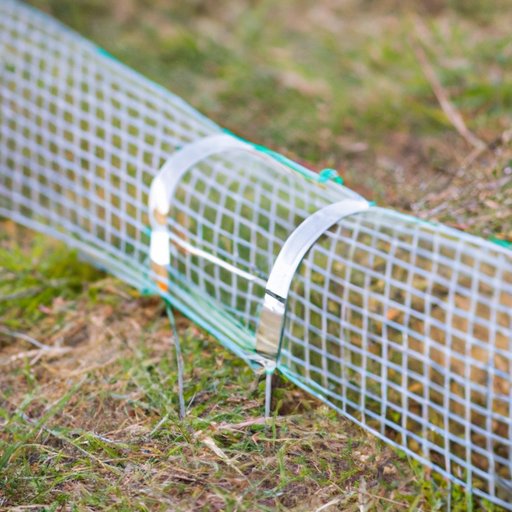Introduction
Invisible fencing is a method of pet containment that uses a specialized electronic collar to keep your pet within a designated area. It has become a popular choice for pet owners who want to ensure their pet’s safety without having to build a physical fence around their home or yard. But how does an invisible fence work? This article will explore the science behind invisible fencing and provide a comprehensive guide to its installation, maintenance, and training.

Exploring the Science Behind Invisible Fences
An invisible fence consists of two main components: a transmitter and a receiver collar. The transmitter emits a signal along a boundary wire that is buried in the ground. When the pet wearing the receiver collar approaches the boundary, the collar will emit a warning tone and then a mild shock if the pet continues to move closer. This shock is designed to be uncomfortable but not painful, providing a deterrent that encourages the pet to stay within the boundaries of the fence.
There are several different types of invisible fences available on the market today. Some systems use a single wire that runs along the perimeter of the property, while others are designed with multiple wires that can create more intricate boundaries. Some invisible fences also come with additional features such as remote access, allowing you to control the system from your smartphone or computer.

How to Install an Invisible Fence
Installing an invisible fence is relatively straightforward, though it does require some preparation. Before beginning the installation process, you should gather all the necessary materials, including the transmitter, receiver collar, boundary wire, and any additional accessories. You should also make sure to read the manufacturer’s instructions carefully to ensure that you are following the correct steps.
When installing the boundary wire, it is important to consider the layout of your property. The boundary wire should be laid out in a continuous loop, with the transmitter placed in a central location. It is also important to take into account any obstacles that may interfere with the signal, such as large trees or metal objects.
Once the boundary wire is laid out, the next step is to connect the transmitter to the boundary wire. This is usually done using a splice kit, which is included with most invisible fence kits. Once the connection is complete, the transmitter should be plugged into a power outlet and tested to make sure it is functioning properly.

A Comprehensive Guide to Invisible Fencing
Maintaining an invisible fence is fairly simple, but there are still a few things to keep in mind. The boundary wire should be checked regularly for signs of damage, such as breaks or fraying. If the wire needs to be replaced, it is best to contact the manufacturer for assistance. The transmitter should also be inspected periodically to ensure that it is functioning correctly.
It is also important to troubleshoot any issues that may arise with the invisible fence. Common problems include weak signals, interference from other electronics, or incorrect placements of the boundary wire. If you are unable to resolve the issue yourself, it is best to consult a professional.
How to Train Your Pet with an Invisible Fence
Training your pet to use an invisible fence is an important part of ensuring their safety and your peace of mind. The first step is to set boundaries and establish a safe zone where your pet can roam freely without being shocked. You should also teach your pet commands such as “stop” or “no” so they know when they are approaching the boundary. Consistency and positive reinforcement are key when it comes to training your pet, as this will help them to learn faster and remember the commands better.
Conclusion
Invisible fencing is a great way to keep your pet safe and contained. It is relatively easy to install and maintain, and with proper training, your pet can quickly learn the boundaries of their new environment. By understanding the science behind invisible fences and following the steps outlined in this article, you can ensure that your pet remains safe and secure.
(Note: Is this article not meeting your expectations? Do you have knowledge or insights to share? Unlock new opportunities and expand your reach by joining our authors team. Click Registration to join us and share your expertise with our readers.)
